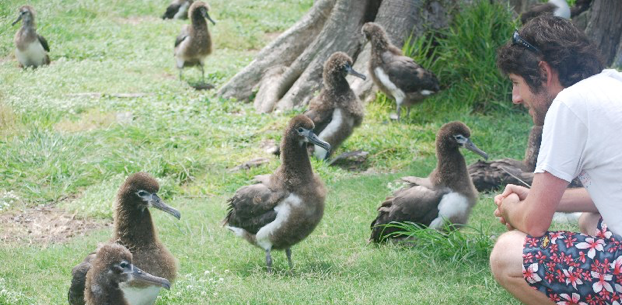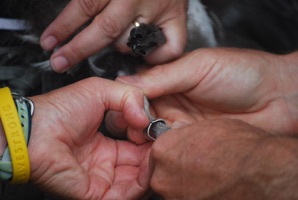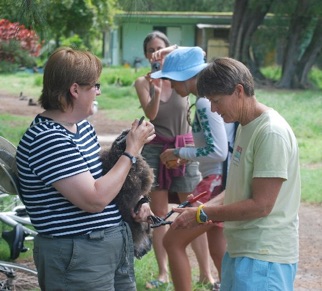June 16, 2009


Have you ever been in a situation where you keep thinking that there’s something really familiar about what you’re experiencing? I’ve had that feeling for the past couple of days and I think I’ve finally identified the similarity. These albatross chicks are a lot like the middle school kids I teach. I shared this realization with a few of my PA’A cohorts and one of them decided to conduct a short lesson with the some of the more attentive chicks (see top photo). The albatross chicks have matured to their fledging stage of development, when they begin shedding their “baby feathers” (e.g. down feathers) and begin growing their soaring feathers. They grow rapidly during this stage and, just like the adolescent 8th graders I teach, are quite awkward. The albatross chicks also seem to be experimenting with their appearance at this age. The hair styles are everywhere: from calm and conforming to wild and crazy. After our tagging activity yesterday, there are even a few chicks wearing “bling” (see photos on right and below). The similarity doesn’t stop with the physical characteristics. Their behaviors are also quite similar. Just like adolescents, albatross chicks are constantly pestering their parents for something and they are always hungry. Check out the Comparative Analysis Photo Gallery and see for yourself

Scientists visiting Midway also use satellite tracking devices to monitor the movements of these birds and other species on the island. Today, I had to duck to avoid a collision with an albatross returning to its chick. Unknowingly, I had ventured into its flight path. I watched the parent continue its landing pattern and search for the chick it had not seen in two or three days. According to their tracking research, scientists have learned that most of the Midway albatross parents fly between Midway and the Bering Sea every two or three days as they search for the food that will nourish their adolescents into fledging adult birds. When I see the albatross “teenagers” stretching their wings into the wind, I can’t help but offer them encouragement. Someday soon they, too, will be heading across the oceans.
REVIEW TOPIC: SATELLITE TECHNOLOGY
The TOPP (Tagging of Pacific Predators) website contains a database of tracking information on a variety of aquatic species and wildlife. Visit the website and select a couple of species you would like to investigate and compare, such as a sea turtle and whale, or albatross and shark. Follow the website links to learn more about the travels of your selected species. Do they travel in similar or different regions of the globe? Which species covers the most distance during their travels? What factors do you think might influence the movement of each species?

